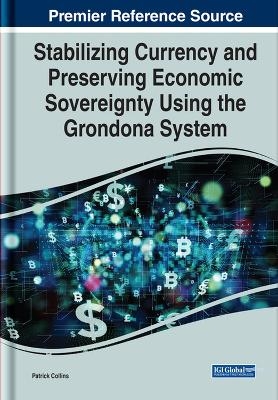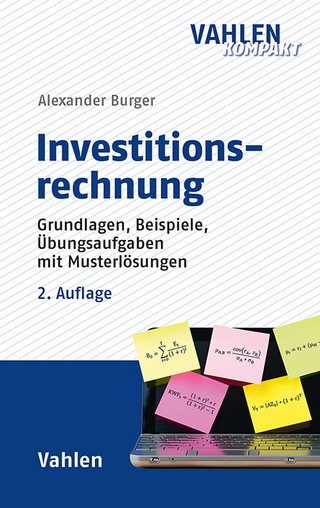
Stabilizing Currency and Preserving Economic Sovereignty Using the Grondona System
Seiten
2022
Business Science Reference (Verlag)
978-1-7998-8302-9 (ISBN)
Business Science Reference (Verlag)
978-1-7998-8302-9 (ISBN)
A sustainable basis for sovereign national money systems, which the world urgently needs, can be achieved by implementing the ‘Grondona System’ - the only practical way to realize the policy advocated by both Keynes and Hayek, whereby the value of currency is stabilized by making it conditionally convertible into a range of primary commodities.
It's now 50 years since gold convertibility of the US dollar ended in 1971, and was succeeded by the unsustainable "non-system" of 100% paper currencies and floating exchange-rates, which is now nearing its end. The monetary instability experienced in recent years imposes enormous costs worldwide, and has led to calls for a "A New Bretton Woods" or other "reset" of the international monetary system. In order to avoid the same problem arising again at a later date, the value of money must once again be defined in terms of some real commodity or commodities, as it has been for most of history. However, making currencies convertible into gold once again would be no panacea. A better alternative, first proposed in the 19th century, and advocated in the 20th century by both Keynes and Hayek (despite being leaders of opposing schools of economics) is for money to be made convertible into a range of commodities other than gold.
A simple, practical means of implementing this idea was promoted in the 1950s by the Australian economist Leo StClare Grondona, to much acclaim in Britain. Despite the growing potential of new forms of money using Blockchain technology, no alternative to real convertibility has been proposed as a reliable means to ensure their value, and so this book argues that the Grondona System's time has now come. The world cannot afford another round of unsustainable and unstable "fiat" currencies that will fail yet again, spreading poverty and injustice worldwide once more.
A sustainable basis for sovereign national money systems, which the world urgently needs, can be simply achieved by implementing this "Grondona System" – the only practical and dependable way to realize the policy advocated by both Keynes and Hayek, whereby the value of currency is stabilized by making it conditionally convertible into a range of primary commodities.
Once one country implements the Grondona system, market forces will be harnessed to stabilise the value of the national currency, creating a system which provides an objective measure of its real value. The impact on both economic policy and on the economics profession of a growing range of countries adopting the system will be profound. It will also help many poor developing countries, which export primary commodities and suffer greatly from both the instability of commodity market prices and fluctuations in world trade.
It's now 50 years since gold convertibility of the US dollar ended in 1971, and was succeeded by the unsustainable "non-system" of 100% paper currencies and floating exchange-rates, which is now nearing its end. The monetary instability experienced in recent years imposes enormous costs worldwide, and has led to calls for a "A New Bretton Woods" or other "reset" of the international monetary system. In order to avoid the same problem arising again at a later date, the value of money must once again be defined in terms of some real commodity or commodities, as it has been for most of history. However, making currencies convertible into gold once again would be no panacea. A better alternative, first proposed in the 19th century, and advocated in the 20th century by both Keynes and Hayek (despite being leaders of opposing schools of economics) is for money to be made convertible into a range of commodities other than gold.
A simple, practical means of implementing this idea was promoted in the 1950s by the Australian economist Leo StClare Grondona, to much acclaim in Britain. Despite the growing potential of new forms of money using Blockchain technology, no alternative to real convertibility has been proposed as a reliable means to ensure their value, and so this book argues that the Grondona System's time has now come. The world cannot afford another round of unsustainable and unstable "fiat" currencies that will fail yet again, spreading poverty and injustice worldwide once more.
A sustainable basis for sovereign national money systems, which the world urgently needs, can be simply achieved by implementing this "Grondona System" – the only practical and dependable way to realize the policy advocated by both Keynes and Hayek, whereby the value of currency is stabilized by making it conditionally convertible into a range of primary commodities.
Once one country implements the Grondona system, market forces will be harnessed to stabilise the value of the national currency, creating a system which provides an objective measure of its real value. The impact on both economic policy and on the economics profession of a growing range of countries adopting the system will be profound. It will also help many poor developing countries, which export primary commodities and suffer greatly from both the instability of commodity market prices and fluctuations in world trade.
Patrick Collins, Azabu University, Japan
| Erscheinungsdatum | 24.01.2022 |
|---|---|
| Sprache | englisch |
| Gewicht | 633 g |
| Themenwelt | Wirtschaft ► Allgemeines / Lexika |
| Wirtschaft ► Betriebswirtschaft / Management ► Finanzierung | |
| Wirtschaft ► Volkswirtschaftslehre ► Finanzwissenschaft | |
| ISBN-10 | 1-7998-8302-7 / 1799883027 |
| ISBN-13 | 978-1-7998-8302-9 / 9781799883029 |
| Zustand | Neuware |
| Haben Sie eine Frage zum Produkt? |
Mehr entdecken
aus dem Bereich
aus dem Bereich
Allgemeines Steuerrecht, Abgabenordnung, Umsatzsteuer
Buch (2024)
Springer Gabler (Verlag)
28,00 €
Grundlagen, Beispiele, Übungsaufgaben mit Musterlösungen
Buch | Softcover (2024)
Vahlen (Verlag)
24,90 €


